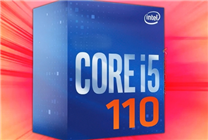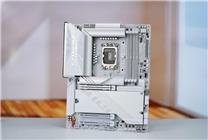Intel’s Surprising Launch of Core i5-110: A Blast from the Past
Summary:
- Intel has introduced the Core i5-110, unexpectedly reviving a 10th-generation processor amid plans for its new "Core Ultra" branding.
- This latest model utilizes a 14nm architecture reminiscent of older generations, raising questions about its position in today’s market.
- The Intel Core i5-110 maintains a competitive specification profile, but its retro roots spark curiosity among tech enthusiasts.
On September 12, Fast Technology unveiled Intel’s unexpected release: the Core i5-110, seemingly contradicting the company’s earlier announcement to transition to the "Core Ultra" branding with its next iteration of processors. Two years ago, Intel had hinted that this would be the last time "Core i" was used; however, the resurrection of this naming convention signals a unique blend of old and new technologies.
New Yet Familiar
The Core i5-110 is categorized within the new Core 100 series, which consists largely of rebranded older products from the Raptor Lake and Meteor Lake families. This classification seems somewhat ambiguous given that the specifications closely resemble those of the familiar Core i5-10400 from the 10th generation lineup. The fact that this model is being released now raises eyebrows and suggests a strategic decision by Intel to leverage its legacy technology in a market that is constantly evolving.
Specifications That Resonate
Delving into the specifications, the Core i5-110 is built on a 14nm process that harkens back to an earlier time in Intel’s history. It features:
- Cores/Threads: 6 cores and 12 threads, enabling smooth multitasking and performance.
- Cache: A third-level cache of 12MB, which enhances data retrieval speeds.
- Frequencies: A base clock of 2.9 GHz and a maximum turbo frequency reaching 4.3 GHz, offering flexibility for both regular tasks and demanding workloads.
- Graphics: Integrated UHD 630 core graphics, with a maximum frequency of 1.1 GHz, suitable for casual gaming and basic graphic tasks.
- Memory Support: Compatible with DDR4-2666 memory, ensuring reliable performance for a variety of applications.
- PCIe Support: Extended support for PCIe 3.0, allowing for compatibility with a wide range of modern peripherals.
- Thermal Efficiency: With a thermal design power (TDP) of 65W, it maintains energy efficiency, making it a practical choice for budget-conscious users.
Despite being a part of Intel’s past, the Core i5-110 remains a relevant player in the market, thanks to its solid specifications.
Legacy Meets Modernity
The 14nm architecture has certainly demonstrated its longevity, spanning from the 5th to the 11th generation of Core processors. Its adaptability and steadfast performance have allowed Intel to resurrect this classic, giving consumers a familiar choice in an era of rapid technological advancement.
Questions abound regarding whether this move will lead to the introduction of more models with similar retro roots. As consumers, we are left pondering the implications of Intel’s strategy—will they continue to draw upon older architectures to meet current market demands, or is this simply a one-off revival that highlights their legacy?
What Lies Ahead?
The launch of the Core i5-110 may represent a strategy aimed at differentiating offerings in an increasingly competitive landscape, especially as tech enthusiasts and everyday users seek both performance and value. It also showcases Intel’s commitment to ensuring that even well-established technologies can find relevance in today’s fast-paced environment.
With the tech world constantly advancing, only time will tell how the Core i5-110 will fare against its modern counterparts. The blend of nostalgia and innovation in this latest release serves as a reminder of Intel’s rich history while steering users’ expectations for future developments.
Conclusion
Intel’s Core i5-110 encapsulates a fascinating juxtaposition of legacy and modern technology. Its surprising introduction shows that classic architectures can still have a role in today’s market. As enthusiasts eagerly await what Intel will offer next, the Core i5-110 stands proof of the company’s ability to innovate while respecting its past.
In the ever-evolving landscape of technology, it will be intriguing to see whether Intel continues this trend or pivots fully towards the advanced architectures of tomorrow.









